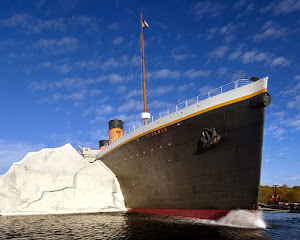Was the Titanic a Cruise Ship?
Was the Titanic a Cruise Ship? Unveiling the
Distinctions
The painstaking effort my husband put into assembling the
intricate Titanic Lego model on my shelf piqued my curiosity. As a Travel
Advisor specializing in cruises, I found myself pondering whether the Titanic
could be deemed a cruise ship.
Unmasking the Titanic's Identity
At first glance, the Titanic's features might seem akin to
those of a cruise ship. However, it's important to note that the Titanic was
categorized as an ocean liner, rather than a cruise ship. The key distinction
lies in their purposes: cruise ships stop at multiple ports for leisure, while
ocean liners transport passengers between continents.
The Titanic's primary function revolved around transatlantic
voyages, expertly ferrying passengers from Europe to North America with
efficiency and comfort. Unlike cruise ships that emphasize onboard experiences,
the Titanic prioritized practical transportation.
Despite its opulence and comfort, the Titanic's core mission was
to convey passengers, mail, and a portion of cargo across the North Atlantic.
Decoding Ocean Liners vs. Cruise Ships
Apart from their functional disparities, ocean liners and cruise ships differ in physical attributes and design philosophies.
The Titanic's Scale and Structure
Even though modern cruise ships outsize the Titanic, this
vessel stood as a remarkable marvel of engineering in its time. In 1912, the
Titanic's remarkable length of nearly 900 feet secured its position as the
largest ship ever constructed. It outweighed contemporary ocean liners,
boasting a weight of 46,300 tons without cargo or passengers.
Capacity in Focus
Designed to accommodate around 2,250 passengers, the Titanic's capacity was impressive for
its era. It's crucial to recognize the three-tiered class system that divided
passengers. First-class passengers enjoyed opulent amenities, spacious cabins,
and elegant dining spaces. Second-class passengers experienced a slightly less
lavish atmosphere, while third-class passengers were offered basic
accommodation.
The decision to travel third-class might seem puzzling, given
the modest accommodations. However, the Titanic was engineered to cater to a
broad spectrum of passengers seeking cost-effective ocean crossings. In
contrast, modern cruise ships aim to provide a universally enjoyable
experience, regardless of cabin level.
Beyond Passengers: Cargo and Commerce
Although renowned primarily as a passenger ship, the Titanic
had an inherent capacity for cargo transportation. The vessel featured
extensive cargo holds on its lower decks, designed to convey a diverse range of
goods, including transatlantic mail, livestock, and grains. This strategic
design aimed to offset the costs of maintaining a lavish ocean liner.
By leveraging its cargo capacity, the Titanic's owner, White
Star Line, intended to generate additional revenue, countering the substantial
construction and operational expenses.
Titanic vs. Today's Cruise Ships
The Titanic's grandeur and upper deck luxury were unparalleled in its time, yet
its dimensions and features pale in comparison to modern cruise ships.
1. Scale and Passenger Capacity
Weighing over 46,000 tons and accommodating 2,250 passengers, the Titanic is dwarfed by today's
giants like Royal Caribbean's Icon of the Seas, boasting a staggering 250,800
tons and a capacity exceeding 7,600 passengers.
2. Amenities and Comfort
While the Titanic prioritized luxury for its first-class passengers, today's cruise ships offer a
wide array of amenities for all passengers. From swimming pools, gyms, and
casinos to concerts, theaters, and waterparks, modern cruise ships have evolved
into veritable floating cities.
3. Itinerary Evolution
Unlike the Titanic's single transatlantic route, contemporary cruise ships explore diverse global destinations, offering a multitude of cruise vacation types and itineraries. Additionally, modern cruise ships return to their departure port, facilitating easy return for passengers.
4. Enhanced Safety and Technology
While the Titanic boasted advanced safety features for its era,
today's cruise ships benefit from state-of-the-art navigation systems, fire
suppression mechanisms, evacuation procedures, and weather detection systems.
Advanced stabilizers ensure passenger comfort even in rough seas.
In Conclusion
Although not a cruise ship per se, the Titanic shares striking similarities with this modern concept.
It extended comfortable and lavish experiences to its passengers. Constructed
in an era devoid of alternative transatlantic options, the Titanic exemplified
swiftness, comfort, and luxury, mirroring the attributes of today's cruise
ships.












Comments
Post a Comment